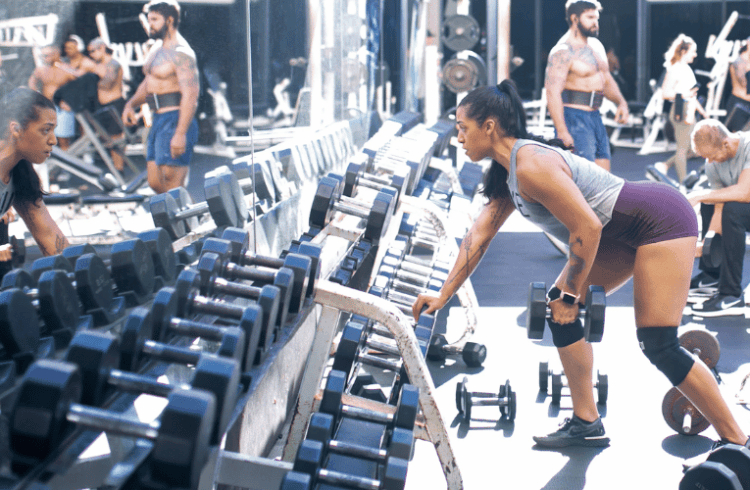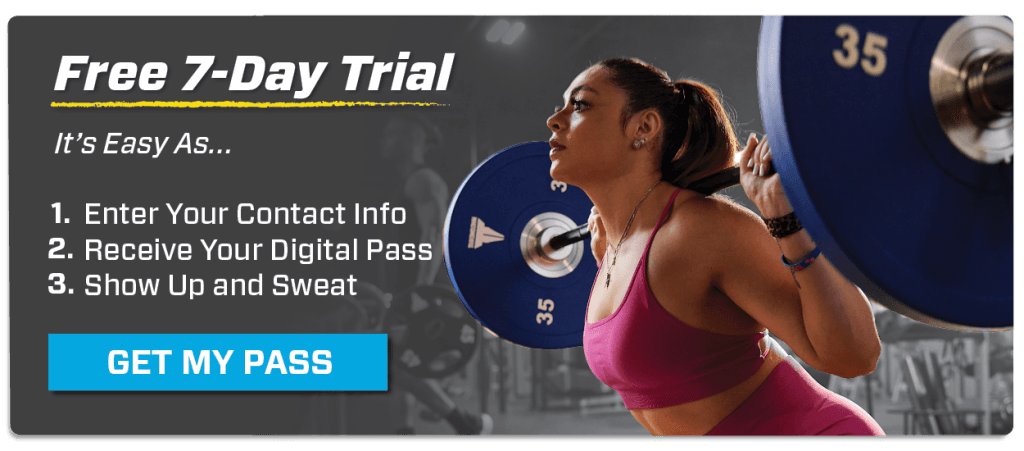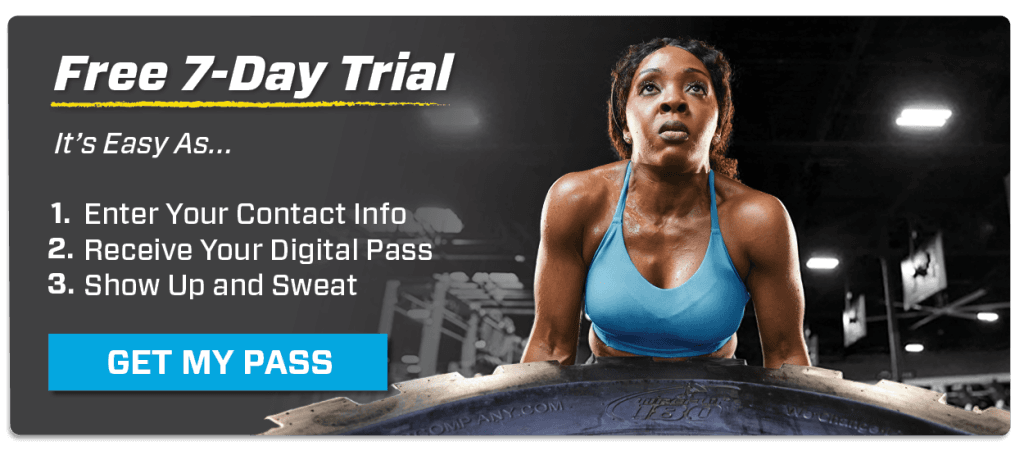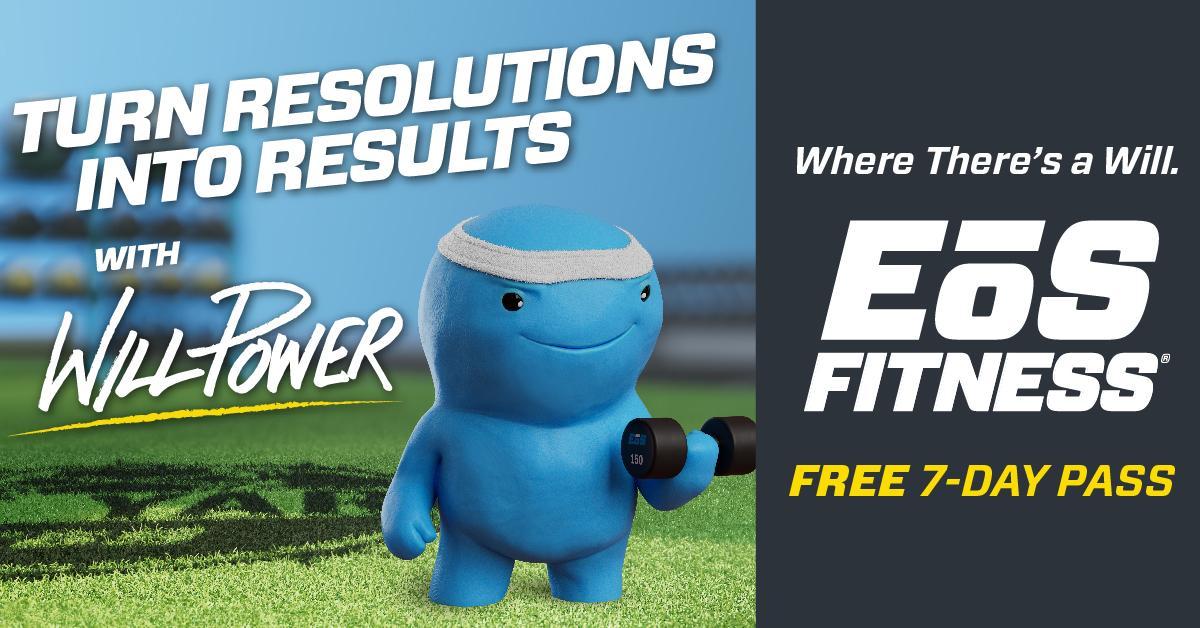HOW TO STRENGTHEN THE 5 LARGEST MUSCLES IN THE BODY
Fitness Tips
Mar 23, 2024 • 12min read
You want to hit the gym, but you only have a little time to get in some strength training. Which muscles should you work in your abbreviated gym sesh? While every muscle deserves your attention, in a time crunch, we recommend zeroing in on the largest muscles in the body.
WHY IS IT IMPORTANT TO STRENGTHEN THE LARGEST MUCLES IN THE BODY?
Strengthening the largest muscles in your body is key to achieving overall fitness and enhancing your physical capabilities. The strongest muscles in the body, including your legs, back and glutes, play a crucial role in daily movements, athletic performance and even maintaining a healthy metabolism. Not to mention that the bigger the muscle, the more calories it burns even while you’re at rest. That means targeting your five largest muscles can help you look and feel better. In this guide, we’ll explore how to strengthen the largest muscles in the body through targeted exercises that are designed to maximize your strength gains. Whether you’re looking to build power, improve your physique, or simply stay fit, these large muscle exercises and biggest muscle groups workouts will help you reach your goals effectively. Here’s what you need to know about the largest and strongest muscles in the body.
HOW MANY MUSCLES ARE IN THE HUMAN BODY?
There are 639 muscles in the human body—good luck counting them all. Although there are three different types of muscles, the type that many of us are most familiar with is the skeletal muscle. Skeletal muscles attach to our bones, pushing and pulling our body in different directions so we can move.
The largest muscles in the body take up a whopping 40% of our body weight and are the only muscles in our body we can consciously control. When we go to the gym and pump iron, we work these skeletal muscles to make us stronger and more stable.
WHAT IS THE LARGEST MUSCLE IN THE BODY?
You may actually be sitting on your largest muscle at this very moment. The largest muscle in the body is the gluteus maximus, also known as your buttocks or glutes. In terms of the largest average muscle size, the glutes are followed closely by the quadriceps, lats, hamstrings and pectoral muscles.
Keep in mind that largest does not mean strongest, as the strongest muscle in the body is still up for debate. Some people say the most powerful muscle in the body is the masseter muscle in the jaw, but the gluteus maximus and quadriceps are often considered some of the strongest too.
Regardless, working your large muscle groups is a necessity for giving your body a strong and balanced foundation, reducing your risk of injury and helping you look your best.
BREAKING DOWN THE LARGEST MUSCLES IN THE BODY
Working your large muscle groups gives you the best return on investment when you walk out of the gym. Incorporating large muscle exercises into your routine is essential for those looking to strengthen the largest muscles in the body. Without any more anticipation, here are the five biggest muscles in the body and how you can work them out.
1. GIVE YOUR GLUTES A BOOST
The gluteus maximus, more commonly known as your “glutes,” is one of the most powerful and largest muscles in the body. It’s critical in almost every big movement you perform, including walking, jumping, sprinting and climbing the stairs.
Many individuals suffer from low back pain and have no idea why. The answer might be underdeveloped glutes, known in the fitness world as “glute amnesia.” Spending big chunks of time sitting at school, work or in the car will leave your glutes disengaged for the majority of the day. Weak glutes can lead to poor posture and low back pain.
Don’t let that happen to you! Take care of your body’s largest muscle. Strengthening your glutes will help you in the gym, on the sports field and in everyday life. Fire up the largest muscle in your body with three key exercises.
SQUATS
The very best glute exercise is a squat. This compound movement works many of the muscles in your posterior chain, including your glutes. (Your posterior chain comprises all the muscles on the back of your body.) If you are new to exercising or working out at home, do five sets of 15 air squats.
If you feel comfortable with the squat movement, throw some dumbbells on your shoulders to make the movement more difficult. Intermediate and advanced exercisers should consider front squats or back squats with a loaded bar. Remember to squeeze your glutes as you push up from the squat.
SIDE STEPS WITH A RESISTANCE BAND
If you really want to feel the burn, step into a resistance band and perform side steps. Position the band just under your knees or above your ankles. Then, position yourself into a quarter squat and sidestep slowly. It won’t take long until you feel this exercise on the outer side of your glute. Three sets of ten steps to each side (20 steps per set) is a good starting rep scheme.
BOX JUMPS OR STEP-UPS
Your glutes are critical to improving your explosiveness, so add some plyometric goodness to your glute workout. To work this aspect of your glutes, find a box at your gym and perform three rounds of 10 box jumps. Make sure you choose a box you are comfortable with. Another alternative is to perform step-ups. To make box step-ups more difficult, grab a moderately weighted dumbbell in each hand.
For a bonus workout, many gyms offer Group Fitness Classes dedicated to working your body’s largest muscle. At EōS Fitness, some of our favorite glute classes are Booty Up!, Bellies & Butts, Bootie Camp Barre™ and Bootie Camp Yoga®.
2. LATS ARE WHERE IT’S AT
Running along the center of your back, the fan-like latissimus dorsi is the largest muscle in your upper body. Bodybuilders appreciate that “lats” give their back that nice tapering effect from broad shoulders to taut waist, but you don’t have to be a bodybuilder to love your lats. This muscle is critical in many upper body movements.
Your lats help you to move your core and arms. When you pick up a grocery bag from the ground and pull it into your body, you can thank your lats. Lats also play a critical role in helping you maintain good posture and avoid injury. Well-developed lats give you thoracic mobility, which means you can move your mid and upper-back. Poor thoracic mobility can lead to shoulder pain, neck pain and low back pain, so don’t forget to give your lats some attention next time you hit the gym.
When it’s time to attack your lats, a few simple exercises can help strengthen this important muscle. It won’t take many reps to get them sizzling!
ROWING
To warm up your lats, hop on the rowing machine at your gym. If you’ve never rowed before, ask a Team Member for guidance. Keep your torso upright during your row and focus on a strong pull with each stroke. If you are new to rowing, aim for 500 meters at a moderate pace. As you improve, you can increase the resistance or increase the distance to 1,000 meters.
LAT PULLDOWNS
Almost every major gym includes a lat pulldown machine. You’ll see a bar (or handles) connected to a cable. Start with a light weight if you’re performing the movement for the first time. Grab the bar in an overhand grip. Keeping your elbows tucked into your body and shoulders back, slowly pull the bar down to your chest. Try to squeeze your back muscles at the bottom of the pull. Perform three sets of eight reps at a moderate weight and increase the weight if it feels too easy.
PULL-UPS
The quintessential gym move is actually a great lat exercise. Try to avoid kipping or swinging during your pull-up as you pull your chin above the bar. Three sets of five pull-ups is a great goal to shoot for. If pull-ups are not yet in your gym tool kit, look for a pull-up assistance machine at your gym, or try adding a resistance band under your feet or knees that can help ease you into a full pull-up. You can also perform jumping pull-ups with the help of a box.
3. JOIN THE QUAD SQUAD
As some of the strongest muscles in the body, your quadriceps are with you every step of the way. Literally. These massive muscles located on the front of your thighs are critical for walking, running and lifting your legs. Your “quads” also help you extend your knees and bend your hips.
If you suffer from knee pain, weak quads could be the culprit. Your quads function as shock absorbers when you run or jump. Weak quads put more pressure on your knees, which can lead to pain and knee-related injuries.
Whether you want to tone your quads or get rid of nagging knee pain, three great exercises can sculpt and strengthen these large leg muscles.
LUNGES
Lunges are your ticket to major quad development. If you’re new to exercising or are exercising at home, lunging without weight is a great start to building your quads. You may want to put a pad or pillow under your knee. Three sets of 30 lunges (15 lunges on each leg) is a prime starting point.
Intermediate exercisers should consider lunging with a pair of moderate-weight dumbbells at your sides or on your shoulders. More advanced exercisers can lunge with a barbell in the back rack or front rack position. Just make sure your form is on point before you start loading on the weight.
CYCLING
One of the best ways to increase the capacity of your quads is to hop on a bicycle and start pedaling. Don’t shy away from hills. That’s where your quads really shine. If you can’t cruise down the bike lanes around your neighborhood, hop on a bike at the gym. Better yet, sign up for a group cycling class. If your quads don’t feel like jelly at the end of class, then you didn’t do it right!
LEG PRESS MACHINE
Squats aren’t just great for your glutes. They’re also amazing for toning and tightening your quads. If you don’t feel comfortable squatting with a barbell, slide on into the leg press machine at your gym. Start with a light weight and build as your quads get stronger. We recommend three sets of six reps at a moderately difficult weight. Try single-leg presses to make sure your dominant leg isn’t taking more than its fair share.
4. HAMSTRINGS
On the other side of the coin (or legs rather) you have your hamstrings. This large muscle group consists of three muscles that run from your hip down to your knee. These muscles help you walk, climb stairs and squat down. If you have hip or knee pain, you might want to give a little extra attention to your hamstrings, as they help bend the knee and rotate your hip.
A lot of gymgoers love working out their quads but overlook their hamstrings and hip flexors. These muscles all work in harmony, so make sure you hit them as well. You can give your hamstrings extra focus with these exercises.
HAMSTRING CURLS
Your hamstrings are like the biceps of your legs as they engage when you bend your legs. As a result, the motion for working your hamstrings is very similar to working your biceps. Hamstring curl machines are a staple at any gym. In the starting position, you’ll lie on your stomach with the backs of your ankles resting against a padded bar. Then you’ll push into your ankles and pull the bar toward your buttocks by bending your legs. Try three reps of ten at a comfortable weight.
SEATED LEG CURLS
Seated leg curls provide a different variation of hamstring curls. If you’re looking to increase your muscle size, this exercise is for you, as some studies have said that the seated variation is more effective in achieving hypertrophy. However, both allow you to improve your strength and are injury resistant.
With a seated leg curl machine, you’ll sit on a seat with your knees bent and the padded bar resting against the backs of your ankles. Like the other variation, you bend your knees and pull the bar down with your ankle. Consider alternating between the two machines on different days so you can hit all your accessory muscle groups and maximize the benefits.
DEADLIFTS
Deadlifts are a great compound workout exercise, working several muscle groups in your legs, but they really get your hamstrings burning too. When done properly, this exercise can target your hamstrings while also strengthening your back and glutes. To perform a proper deadlift, start standing in front of a barbell on the floor or low on the Smith press.
Then, bend your knees and grip the bar shoulder-width apart while keeping your arms in line with your shins and your back angled straight. Keeping the bar close to your legs, stand up by straightening your back and pushing your hips forward to raise the bar to thigh level. Start with a lower weight until you have the proper form figured out and then start moving up.
5. RESPECT YOUR PECS
If you really want to say something with your chest, working out your pectoral muscles is the best way to do it. One of the largest muscles in the upper body, the pectoralis major links the front of the chest to the shoulder and upper arm. You engage these muscles anytime you do a pushing movement, such as pushing open a door or throwing a ball. However, your pecs are responsible whenever you move your arms. You can make great progress on your chest muscles with three key exercises.
BENCH PRESS
The bench press is a gym staple. It helps to build a wide, strong chest while also working your shoulders and triceps. To do a bench press, lie flat on the bench and grip the barbell shoulder-width apart. Bring the bar down to your chest and then push it straight up while extending your arms. For your safety, always start with a weight you know you can handle and slowly move up once you can perform 8-10 reps comfortably.
PUSH-UPS
You can actually grow your pecs without any equipment at all, thanks to the push-up. Push-ups are also a great warm-up exercise for advanced lifters. Start in a plank position with your arms straight and slowly bend your elbows to bring your chest to the floor. Then push yourself back up to the starting position by extending your arms and pushing your hands into the floor. Try to do three sets of ten push-ups, or start with as many as you can.
CHEST FLYS
Chest flys isolate your pectoral muscles to really boost the definition of your chest. Many gyms have a machine for this exercise, which allows you to set your preferred weight and get the proper position. Perform flys by gripping the two handles with your arms spread out straight, with a slight bend in the elbow. Keeping your arms only slightly bent, bring the handles together in the middle in front of you. You can also perform this exercise with dumbbells and a bench.
LOVE YOUR LARGEST MUSCLES
Focusing on the largest muscles in the body can net you the best return on your exercise investment, helping you build power and endurance. It doesn’t matter if you’re new to strength training or a seasoned athlete, the key is consistency and proper technique. Working your large muscle groups helps you avoid injury while also improving your performance in all your fitness-related undertakings, whether you’re looking to set a new personal record or just keep up with your kiddos. Just keep in mind that your other muscles also deserve your attention. Keep challenging yourself with these large muscle exercises and watch as your strength and performance reach new heights. If you aren’t sure how to put together a full-body strength-training plan, it might be time to invest in Personal Training to give you that extra guidance.
Now get your glutes to the gym — and your lats and quads, too! To put your muscles to work, find an EōS Fitness location near you. If you’re not ready to commit to a membership, don’t worry, sign up for a Free 7-Day Gym Pass to see what makes EōS Fitness so great.







